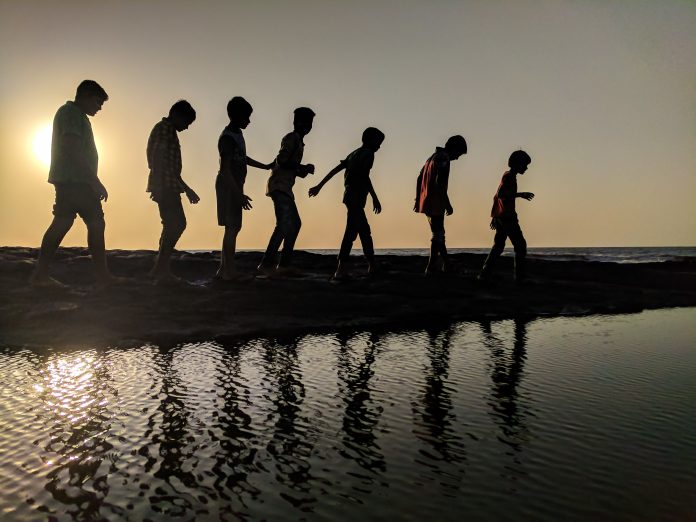‘If you want to go fast, go alone, if you want to go far, go together’ (African proverb).
Recent estimates suggest that 600 million jobs would have to be created over the next 15 years to meet youth employment needs. The total global number of unemployed youths was estimated at over 70 million in 2022, a slight improvement from 2021 (75 million) but still five million above the pre-pandemic level of 2019. The share of youth not in employment, education or training (NEET) in 2020 – the latest year for which a global estimate is available – rose to 23.3 per cent, an increase of 1.5 percentage points from the previous year and a level not seen in at least 15 years.
The youth population will grow by more than 78 million between 2021 and 2030. Low income countries will account for nearly half of that increase. Education and training systems need to respond to this challenge.
According to a recent ILO report, an additional 8.4 million jobs for young people could be created by 2030 through the implementation of green and blue policy measures. Targeted investments in digital technologies could also absorb high numbers of young workers. “What young people need most is well‑functioning labour markets with decent job opportunities for those already participating in the labour market, along with quality education and training opportunities for those yet to enter it.”
July 15th. last was World Youth Skills Day, and, as per usual on such flagship days it was accompanied by a suite of statements, speeches and exhortations from international organisations and politicians.
Antonio Guterres, the UN Secretary General set out the context: “In every corner of the world, young people face a whirlwind of change — technological advancements, a rapidly changing job market, demographic shifts, climate challenges, and learning losses due to the COVID-19 pandemic.”
Technical competence cannot be a solo voyage
There is a recognition that technical skills alone are not enough. While there is a strategic importance of equipping young people with skills for employment, it is equally important that they are furnished with skills for life. Personal growth and development of life skills should attend the more practical learning and training modules. Problem solving, communication and social skills are essential. The provision of skills for youth that help them actively engage in their local communities and beyond, is paramount.
“Technological advancements and shifting labour market dynamics increasingly call for agile and adaptable skill sets. It is crucial that we empower young people to navigate these changes effectively. Technical and vocational education and training (TVET) is well placed to meet these demands by reducing access barriers to the world of work, ensuring that skills gained are relevant, recognized and certified, promoting green skills and practices, and offering skills development opportunities for youth who are not in education, employment and training.” United Nations
With the exponential rise in technological advancements, the skills gap is widening. Technological ability is currently considered the most important skill required. The value of technological competence cannot be underestimated. However, today’s youth need to cultivate a new set of intelligence and skills to keep up with the lightning-pace of this changing world. These skills of the future must go beyond technological competence
Reflecting on the needs of the future on World Youth Skills Day, a recent report by the UN on Africa is immediately valid and vital for other global regions. It points to three skills that youth need to unlock current and future opportunities. These include Digital Intelligence, Relational Intelligence and Collective Intelligence.
Youth skills helping balance digital life with real life
Digital intelligence will help to navigate the real impact of emerging digital technologies. On the one hand, technological advancement is creating positive benefits by easily and quickly connecting people and ideas across space and time. Yet, this intense interaction with diverse tools has a downside also that can result in negative consequences such as digital addiction, isolation and the rapid spread of disinformation.
To mitigate this, users need Digital Intelligence, or Digital Literacy, which is the ability to question ‘When, What, Where, Why, Who and How much’ of their relationship with digital technologies. High Digital Intelligence will enable youth to overcome the challenges and demands of digital life including the application of new digital knowledge and skills while maintaining a connection with real life.
Youth skills and the importance of connections between people
Secondly, relational intelligence will help youth to protect human interaction. In today’s digital world, online acquaintances are often mistaken for real friends. Affirmation and a sense of validation is determined by the number of ‘likes’, and ‘influencers’ have become the new mentors. Navigating social situations in a technologically advanced world calls for a high level of Relational Intelligence. Protecting relationships in real life and the space they occupy will help young people invest the right amount of time and effort in relationships that enhance their lives.
Youth skills to act as engine driving collective action
Thirdly, Collective Intelligence recognises that everyone has skills, knowledge or areas of expertise that bring value to the group. The value of working together, of the aggregation of skills and knowledge, the pooling of talent cannot be underestimated in the search for solutions to current and future problems.
Tom McGrath


